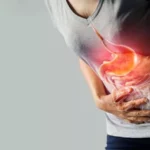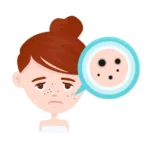Panic Attacks
Contents
A panic attacks is a sudden attack of fear or discomfort that is triggered by extreme physical and emotional reactions.
In this fight-or-flight system occurs, but what is the fight-or-flight system? For example.
If you suddenly see a tiger in the street, the body naturally releases adrenaline hormones, increasing heart rate and getting you moving fight or flight action.
Sudden anxiety or danger triggers adrenaline hormone causing an increase in heart rate which prepares individuals for a fight or flight response.
Moreover, If see someone or are aware of symptoms of panic attacks then you can save a person’s life.
12 Symptoms of Panic Attacks
These 12 visible symptoms of a panic attack and immediate treatment can save a person’s life there are:
Increase heartbeat
An increased heartbeat can happen due to many potential reasons like stress, anxiety before an interview, medical conditions, etc.
Anxiety disorders can increase the risk of cardiovascular disease, to about 3rd to 4 times higher, after s*x, substance use, and depression (1) (2).
During panic attacks, adrenaline hormones are released in our blood causing increased blood pressure and then increased heartbeat.
Shortness of breath
In a panic attack, the priority of the brain is to get more oxygen into the bloodstream for a fight-or-flight response.
However, research says that it occurs due to miscommunication of brain and body where instead of deep breaths brain commands fast and shallow breathing.
Researchers have shown that people with panic disorder have a higher change in Co2 levels this response can lead to hyperventilation.
Chest pain
It is a common symptom in panic attacks and can be a painful experience, but what happens inside the body to cause chest pain?
Basically, due to the fight or flight response blood pressure, heartbeat and muscle tightness are increased which contribute in chest pain.
A new study showed that individuals with panic attacks or disorders have a decreased blood flow to the heart during panic attacks.
Dizziness
It is another common sign of a panic attack.
According to research, cortisol (a stress hormone), and other compounds can affect vestibular function which can result in dizziness.
A study reveals on fMRI scans, that panic attacks affect the brain several regions like balancing and awareness which lead to dizziness.
Basically, rapid decreases in oxygen levels and decreased blood flow to the brain contribute to dizziness.
Sweating
In the fight or flight response body immediately increases cortisol levels, where the person sees sweating, mostly in the hands.
As someone feels stressed his/her body temp increases causing the sweat gland to sweat more than normal.
A new study research result found that panic attack individuals have more skin conductance responses than other groups.
Choking Sensation
The choking sensation is not exactly physical choking it is the result of a fight-or-flight response, but how does this happen?
During panic attacks, adrenaline hormones release which triggers muscle tightness including throat and chest. shallow breathing also contributes to it.
A 2023 study showed that overactivity in the brain fear part (amygdala) may contribute to panic attacks including choking, chest pain, etc.
Shaking
During an attack shaking or trembling is commonly seen when a person experiences a scary or fear feeling.
In the fight or flight response brain gives commands to muscles for action like running, In this duration muscles become overactive leading to trembling.
But taking deep breathing decreases blood pressure, and increases oxygen flow to the brain, resulting in a reduction in shaking.
Nausea and abdominal Discomfort
Another sign of all that nausea and abdominal discomfort.
The release of stress hormones like cortisol and adrenaline disturbs the gut’s hormonal balance causing nausea and discomfort.
Research reveals that people who are more at risk of panic attacks have a lower tolerance for normal digestive feeling.
Chills or heat sensations
It is the same as sweating, where body temperature increases, and Fluctuations in body temp sometimes cause chills and heat.
A new study suggests that during a panic attack, the connection b/w brain and body fluxes the body temp due to chills and heat sensations.
Fear of Losing Control
In this situation, a person loses control in their grip and feels that everything is coming close to them.
These are temporary feelings, but what happens during this situation?
Increased heartbeat and low oxygen supply reaching the brain (affecting our senses) lead to losing control of your body.
Dizziness also contributes to losing control.
Derealization
It is a confusing feeling, where a person believes in that imagine which they watched in the movie, but that is not real.
A study reveals that childhood trauma leads to derealization during panic attacks.
One more study showed that people with anxiety disorder who experienced derealization are more at risk of suicidal thoughts.
Consult a mental health doctor, where proper diagnosis and treatment will help and do not search on your own.
Other panic attack symptoms and sensations
There are several other symptoms of panic attacks and sensations:
- Instant worry about another panic attack
- low blood pressure
- headache
- dry mouth
- hot flashes among with chills
- feel fainted
Down Line
A panic attack occurs due to intense fear that is triggered by physical and emotional reaction.
It leads to a fight and flight situation where the body is ready for action blood pressure increases, and fast and frequently oxygen occurs.



